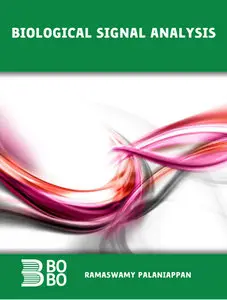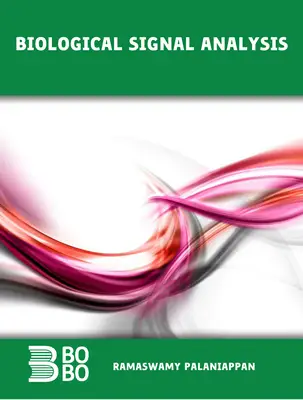"Biological Signal Analysis" by Ramaswamy Palaniappan
First Edition
BoBoCoAe, RP & Ventus Publishing | 2010 | ISBN: 8776815943 9788776815943 | 137 pages | PDF | 7 MB
First Edition
BoBoCoAe, RP & Ventus Publishing | 2010 | ISBN: 8776815943 9788776815943 | 137 pages | PDF | 7 MB
This book is concerned with the aim of analysing biological signals to extract useful information. The book will provide the reader with an understanding of biological signals and digital signal analysis techniques such as conditioning, filtering, feature extraction, classification and statistical validation for solving practical biological signal analysis problems using MATLAB.
The first chapter has introduced some of these biological signals and discussed their origins. The methods for signal analysis will depend on the type of the signal and nature of the information being carried by the signal - there are some general methodologies and some specific ones for particular signals.
The following chapters will deal with some of the popular methodologies while the final chapter is dedicated for discussion of several real world applications that use the methodologies described in the previous chapters.
MATLAB6 software is used throughout the text here. While some would argue that other specific software packages could have been used, the decision to use MATLAB was taken as it is commonly used in signal analysis and requires much smaller effort in learning to use it.
Contents
Preface
About the author
1. Introduction
1.1 A Typical Biological Signal Analysis Application
1.2 Examples of Common Biological Signals
1.2.1 Electrocardiogram
1.2.2 Electroencephalogram
1.2.3 Evoked Potential
1.2.4 Electromyogram
1.2.5 Phonocardiogram
1.2.6 Other Biological Signals
1.3 Contents of this book
1.4 References
2. Discrete-time signals and systems
2.1 Discrete-time signal
2.1.1 Sampling
2.1.2 Aliasing
2.2 Sequences
2.3 Basic Discrete-time System Operations
2.3.1 Product (modulation)
2.3.2 Addittion
2.3.3 Multiplication
2.3.4 Time reversal (folding)
2.3.5 Branching
2.3.6 Time shifting
2.3.7 Time scaling
2.3.8 Combination of operations
2.4 Examples on sequence operations
2.5 Bibliography
3. Fourier transform
3.1 Discrete frequency
3.2 Discrete Fourier transform
3.3 DFT computation using matrix relation
3.4 Picket fence effect
3.5 Effects of truncation
3.6 Examples of using DFT to compute magnitude spectrum
3.7 Periodogram
3.7.1 Welch method
3.8 References
4. Digital Filtering
4.1 Filter Specifi cations
4.1.1 Low-pass filter
4.1.2 High-pass filter
4.1.3 Band-pass and band-stop filters
4.2 Direct fi ltering in frequency domain
4.3 Time domain filtering
4.4 Simple FIR filters
4.4.1 Increasing the order of the simple filter
4.4.2 BPF design using sum and difference filter
4.5 FIR filter design using window method
4.6 IIR Filter design
4.7 References
5. Feature extraction
5.1 Simple features
5.2 Correlation
5.2.1 Choosing the autoregressive model order
5.2.2 Autoregressive model to predict signal values
5.2.3 Autoregressive coeffi cients as features to discriminate mental tasks
5.3 Spectral features – Power spectral density
5.4 Power spectral density derived features
5.4.1 Asymmetry ratio PSD
5.4.2 Spectral correlation/coherence
5.4.3 Spectral peaks
5.5 Power spectral density computation using AR features
5.6 Hjorth descriptors
5.7 Time domain features
5.8 Joint time-frequency features
5.9 References
6. Classification methodologies
6.1 What is classifi cation?
6.2 Nearest Neighbour classifier
6.2.1 k-NN algorithm
6.2.2 Advantages and disadvantages of k-NN classifier
6.2.3 MATLAB program for k-NN
6.2.4 Reducing k-NN training dataset size
6.2.5 Condensed Nearest Neighbour
6.2.6 Edited Nearest Neighbour
6.3 Artificial neuron
6.4 Multilayer-Perceptron neural network
6.5 MLP-BP classifi er architecture
6.5.1 Training MLP-BP classifier
6.5.2 Testing the performance of MLP-BP classifier
6.5.3 MLP-BP classifi er implementation using MATLAB
6.5.4 MLP-BP problems
6.6 Performance measures
6.7 Cross validation
6.7.1 Equal class weight
6.7.2 Leave one out
6.8 Statistical measure to compare two methods
6.8.1 Hypothesis testing
6.9 References
7. Applications
7.1 Ectopic beat detection using ECG and BP signals
7.2 EEG based brain-computer interface design
7.2.1 BCI based on transient visual evoked potential
7.2.2 BCI based on mental tasks
7.3 Short-term visual memory impairment in alcohol abusers using visual evoked potential signals
7.4 Identification of heart sounds using phonocardiogram
7.5 References
Endnotes
with TOC BookMarkLinks



